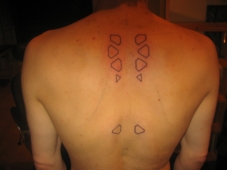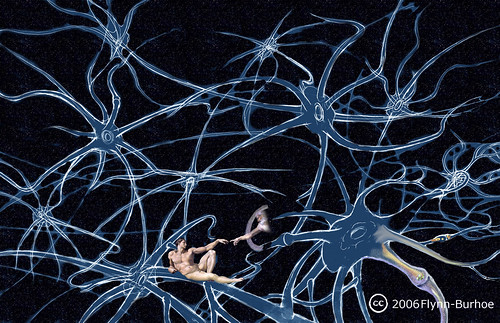According to one theory of language evolution, structure emerged gradually, with sub-parts of words being re-interpreted by learners as referring to sub-parts of the things they referred to. However, for this process to work, there must be some chance similarities between words and referents to begin with. This has been a major criticism of the theory, but here I present some evidence that such chance coincidences do occur (tipped off by a colleague).
Below are the front covers of two books on language evolution. The first is Christiansen & Kirby's Language Evolution, the second is Tecumseh Fitch's recent publication, The Evolution of Language.


The first thing you'll notice is that they both feature trees in twilight. Strange enough perhaps, especially when it's not really that obvious what trees have to do with language evolution. However, a further analysis reveals an even greater coincidence:
 It appears as though both covers feature the same tree. Indeed, looking up the images revealed that both are property of CORBIS, and both were taken in the Massai Mara Game Reserve, Kenya.
It appears as though both covers feature the same tree. Indeed, looking up the images revealed that both are property of CORBIS, and both were taken in the Massai Mara Game Reserve, Kenya.
From now on, Language Evolution and Acacia trees will be forever linked because of a chance occurance. There are even rumours of a trip to visit the 'Language Evolution Tree'.
And so structure emerges from chaos ...
Below are the front covers of two books on language evolution. The first is Christiansen & Kirby's Language Evolution, the second is Tecumseh Fitch's recent publication, The Evolution of Language.


The first thing you'll notice is that they both feature trees in twilight. Strange enough perhaps, especially when it's not really that obvious what trees have to do with language evolution. However, a further analysis reveals an even greater coincidence:
 It appears as though both covers feature the same tree. Indeed, looking up the images revealed that both are property of CORBIS, and both were taken in the Massai Mara Game Reserve, Kenya.
It appears as though both covers feature the same tree. Indeed, looking up the images revealed that both are property of CORBIS, and both were taken in the Massai Mara Game Reserve, Kenya.From now on, Language Evolution and Acacia trees will be forever linked because of a chance occurance. There are even rumours of a trip to visit the 'Language Evolution Tree'.
And so structure emerges from chaos ...


















